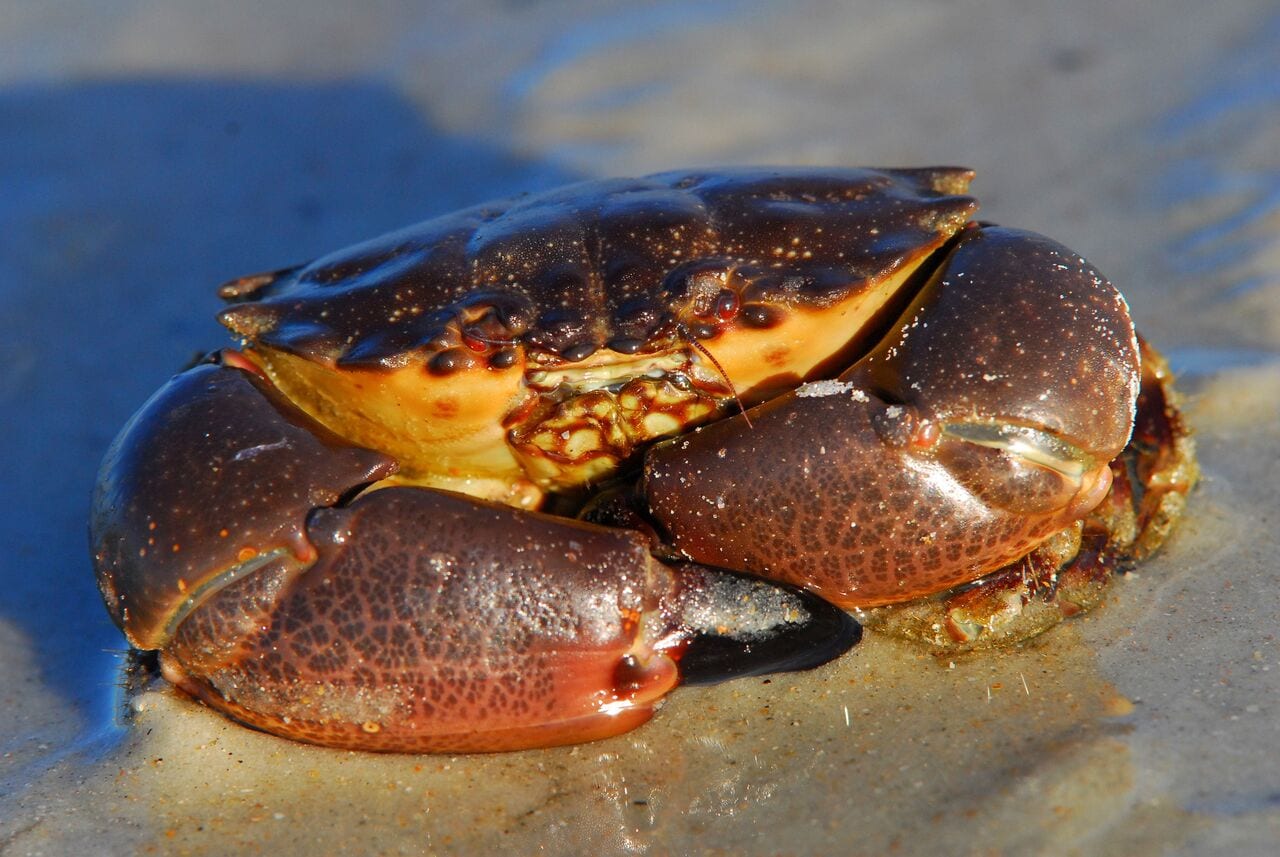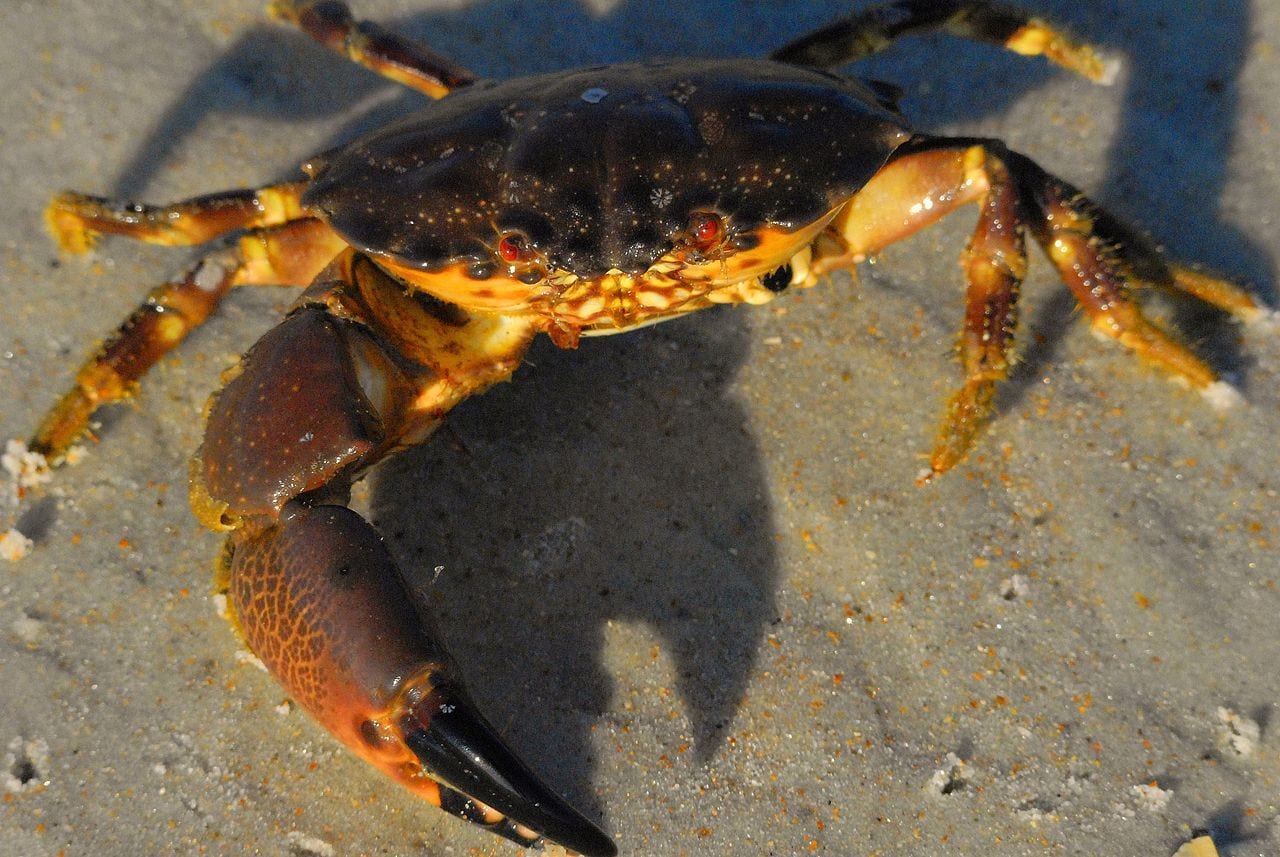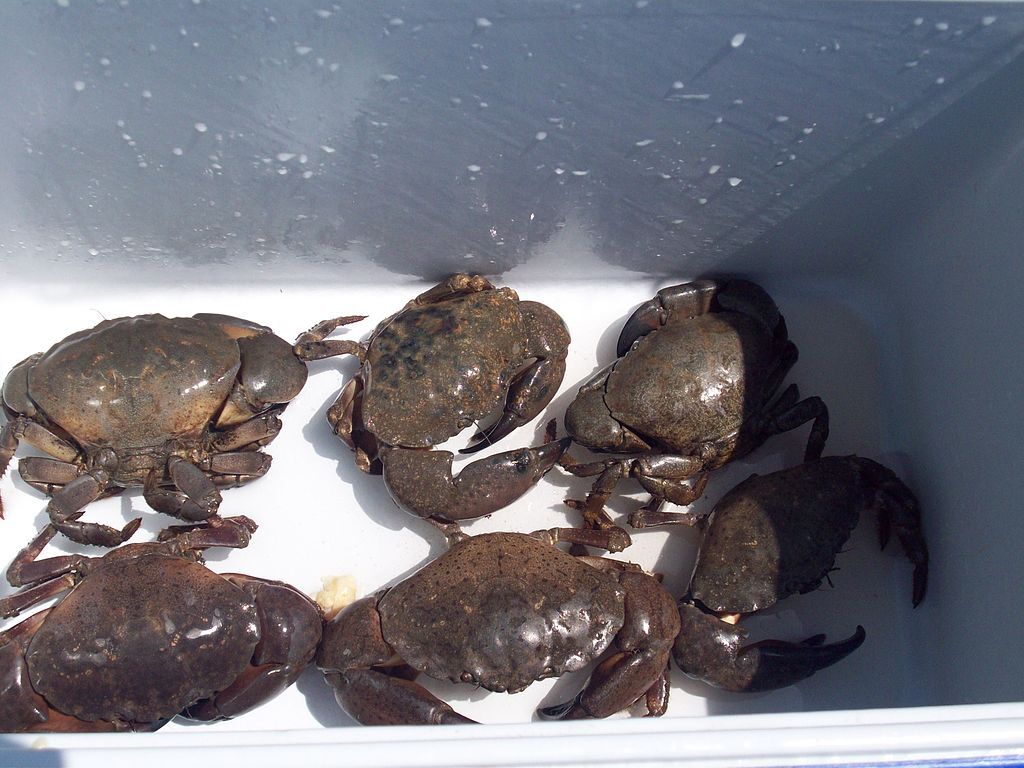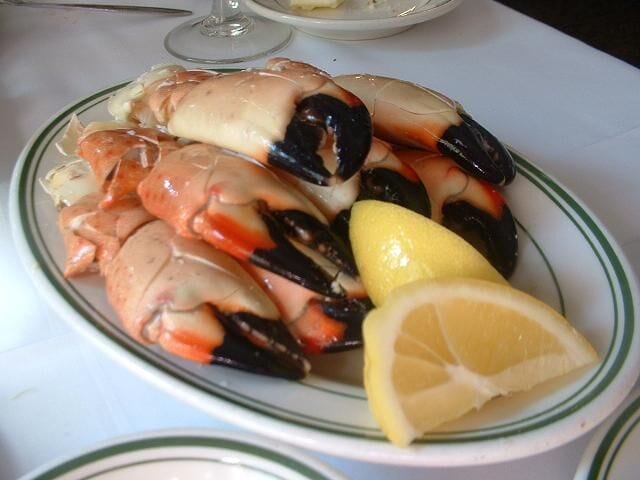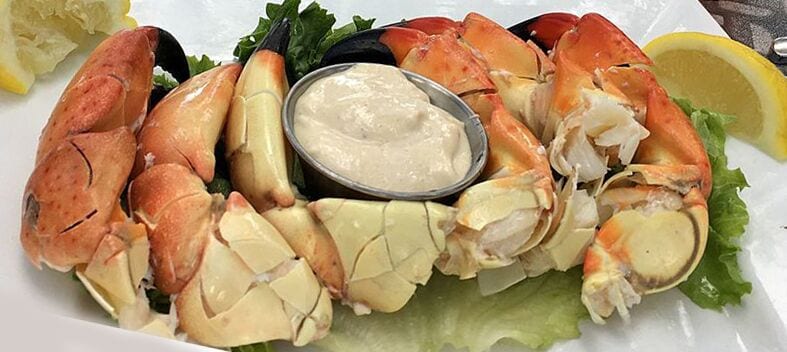Florida Waterways
CAPTIONS
A juvenile stone crab
Another juvenile stone crab
Stone crabs in a cooler
A picture of a stone crab
A stone crab meal
Another stone crab meal
“Stone Crabs”
By Kevin McCarthy
Our Florida waterways supply us with an abundance of riches, not only in terms of fish, plankton, and shipwrecks, but also in such a money-maker as stone crabs. In fact, according to National Fisherman (October 2018), “The state [of Florida] is responsible for 99 percent of U.S. stone crab landings,” making the product among the top four most valuable fisheries in the state.
Since 2011, the average annual haul of stone crabs has been 3.7 million pounds, which brought in almost $28 million. This year the total dipped to 2.1 million pounds, both because the numbers of octopus (which feed on stone crabs) was way up, and the action of Hurricane Irma affected the waters right before the 2017 season opened. The lower yield, however, resulted in higher prices because of the law of supply and demand. Paradoxically, this year’s red tide may result in even higher yields of stone crabs next year, partly because some stone crabbers have had to move out of Florida waters this season, going elsewhere to find crabs, which means that after the red tide subsides, the Florida crabbers may find many more crabs available than before.
The Florida stone crab (Menippe mercenaria) is found all around the state and throughout the Gulf of Mexico and the Bahamas. The shell or carapace can reach six inches in width, and the color of the crabs is usually brownish red. The claws are unequal in size and have black tips. The crabs like to eat oysters and small mollusks and worms. Their enemies include sea turtles, grouper, horse conchs, octopuses, and – of course – fishermen.
The crabs like to gather in shallow water and in holes near dock pilings. The crabs can make the holes by using shells for digging. When predators attack crabs, the latter are willing to lose their limbs in order to escape, but the limbs will grow back. And each time the crab molts, its new claw will be larger. Because the claws are what diners like to eat, not the bodies of the crabs, harvesters will break off one of the claws and return the animal to the sea, where the crab will regenerate its lost claw.
Fishermen can harvest the stone crabs from mid-October until mid-May. Careful management of the species has led to stable catches, although outside factors (an abundance of octopuses, the red tide, hurricanes) can have a direct effect on the numbers caught. Female stone crabs can produce up to a million eggs during the spring and summer spawning season. According to marine scientists, the lifespan of a crab is about seven to eight years.
Among the popular restaurants in the state that have specialized in stone crabs, is Joe’s Stone Crab Restaurant in Miami Beach, which has done much to spread the word about this wonderful Florida delicacy from the 1920s to the present.
Kevin McCarthy, the author of North Florida Waterways 2013 – (available at amazon.com), can be reached at ceyhankevin@gmail.com.
